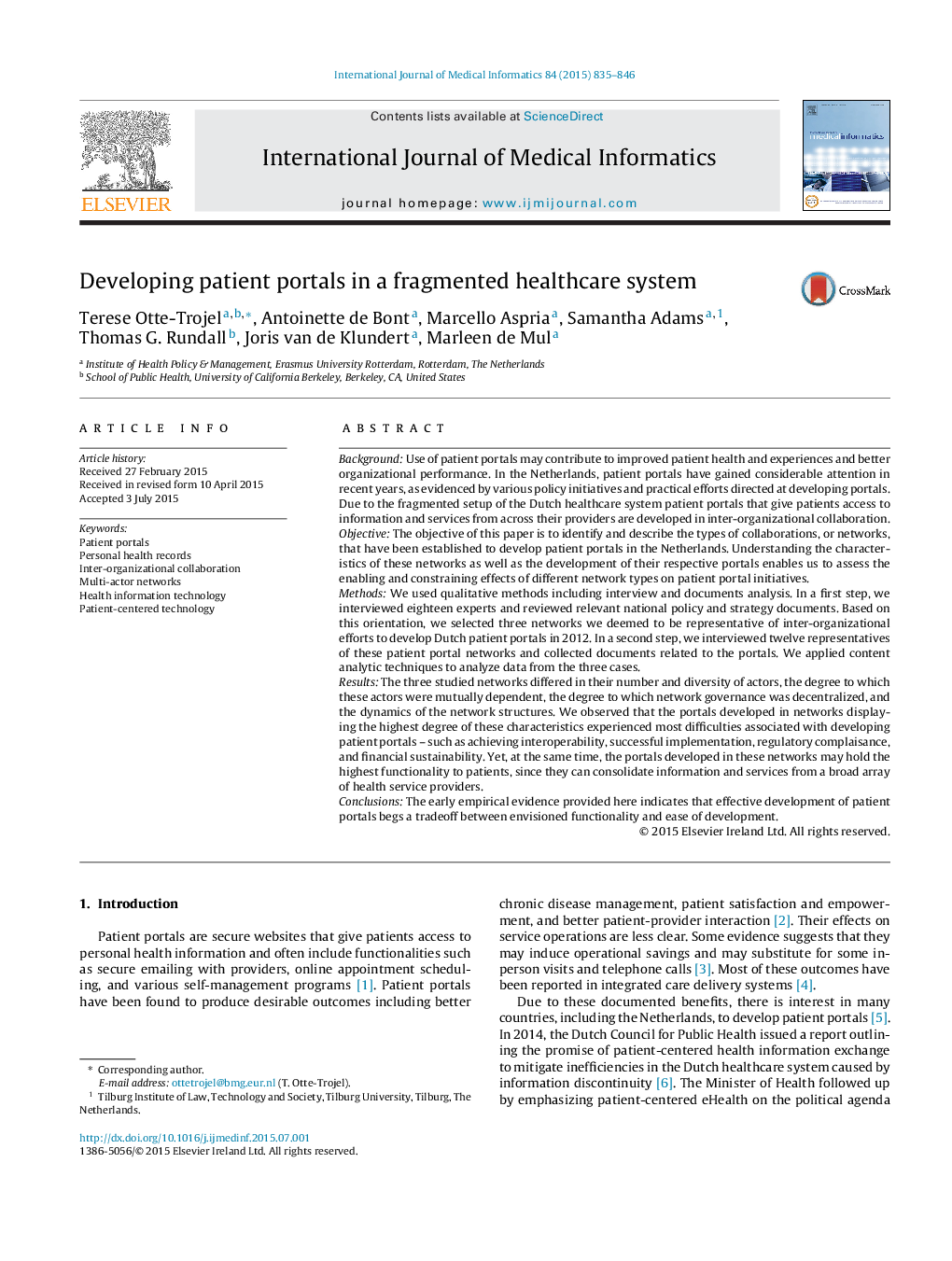| کد مقاله | کد نشریه | سال انتشار | مقاله انگلیسی | نسخه تمام متن |
|---|---|---|---|---|
| 516822 | 1449106 | 2015 | 12 صفحه PDF | دانلود رایگان |
• We classify and describe three types of patient portal networks.
• We describe the patient portals developed in these networks.
• We identify the networks’ key difficulties with developing patient portals.
• The most complex networks’ patient portals may hold most value to patients.
• The most complex networks may have the most difficulty with developing portals.
BackgroundUse of patient portals may contribute to improved patient health and experiences and better organizational performance. In the Netherlands, patient portals have gained considerable attention in recent years, as evidenced by various policy initiatives and practical efforts directed at developing portals. Due to the fragmented setup of the Dutch healthcare system patient portals that give patients access to information and services from across their providers are developed in inter-organizational collaboration.ObjectiveThe objective of this paper is to identify and describe the types of collaborations, or networks, that have been established to develop patient portals in the Netherlands. Understanding the characteristics of these networks as well as the development of their respective portals enables us to assess the enabling and constraining effects of different network types on patient portal initiatives.MethodsWe used qualitative methods including interview and documents analysis. In a first step, we interviewed eighteen experts and reviewed relevant national policy and strategy documents. Based on this orientation, we selected three networks we deemed to be representative of inter-organizational efforts to develop Dutch patient portals in 2012. In a second step, we interviewed twelve representatives of these patient portal networks and collected documents related to the portals. We applied content analytic techniques to analyze data from the three cases.ResultsThe three studied networks differed in their number and diversity of actors, the degree to which these actors were mutually dependent, the degree to which network governance was decentralized, and the dynamics of the network structures. We observed that the portals developed in networks displaying the highest degree of these characteristics experienced most difficulties associated with developing patient portals – such as achieving interoperability, successful implementation, regulatory complaisance, and financial sustainability. Yet, at the same time, the portals developed in these networks may hold the highest functionality to patients, since they can consolidate information and services from a broad array of health service providers.ConclusionsThe early empirical evidence provided here indicates that effective development of patient portals begs a tradeoff between envisioned functionality and ease of development.
Journal: International Journal of Medical Informatics - Volume 84, Issue 10, October 2015, Pages 835–846
